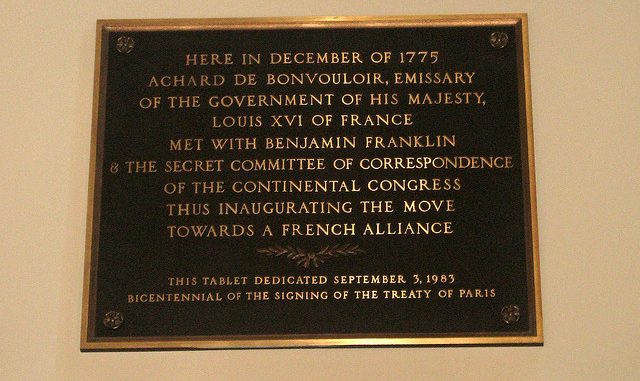The committee, consisting of Benjamin Franklin, Benjamin Harrison, John Dickinson, John Hay and Robert Morris, instructed Silas Deane to meet with French Foreign Minister Charles Gravier, Count de Vergennes, to stress America’s need for military stores and assure the French that the colonies were moving toward “total separation” from Great Britain. Covert French aid began filtering into the colonies soon after the outbreak of hostilities in 1775. Deane, a Connecticut delegate to the Continental Congress, left for France on the secret mission on March 3, 1776.Deane managed to negotiate for unofficial assistance from France, in the form of ships containing military supplies, and recruited the Gilbert du Motier, marquis de Lafayette to share his military expertise with the Continental Army’s officer corps. However, it was not until after the arrival of the charming Benjamin Franklin in France in December 1776 and the American victory at the Battle of Saratoga in October 1777 that the French became convinced that it was worth backing the Americans in a formal treaty.On February 6, 1778, the Treaties of Amity and Commerce and Alliance were signed, and in May 1778 the Continental Congress ratified them. One month later, war between Britain and France formally began when a British squadron fired on two French ships. During the American Revolution, French naval fleets proved critical in the defeat of the British, which was assured after the Battle of Yorktown in October 1781.
[adrotate banner=”24″]

[pt_view id=”517b65fj16″]





Be the first to comment